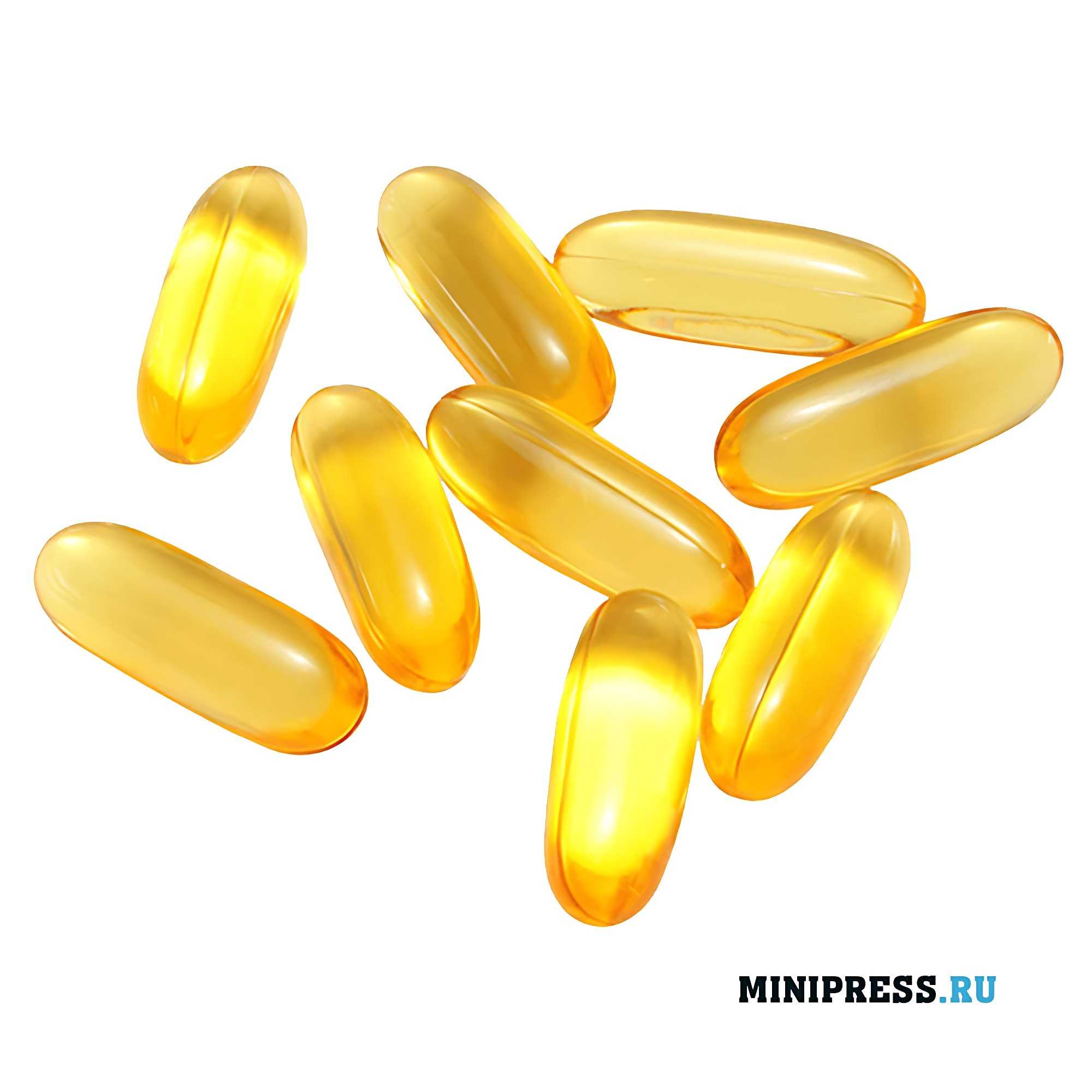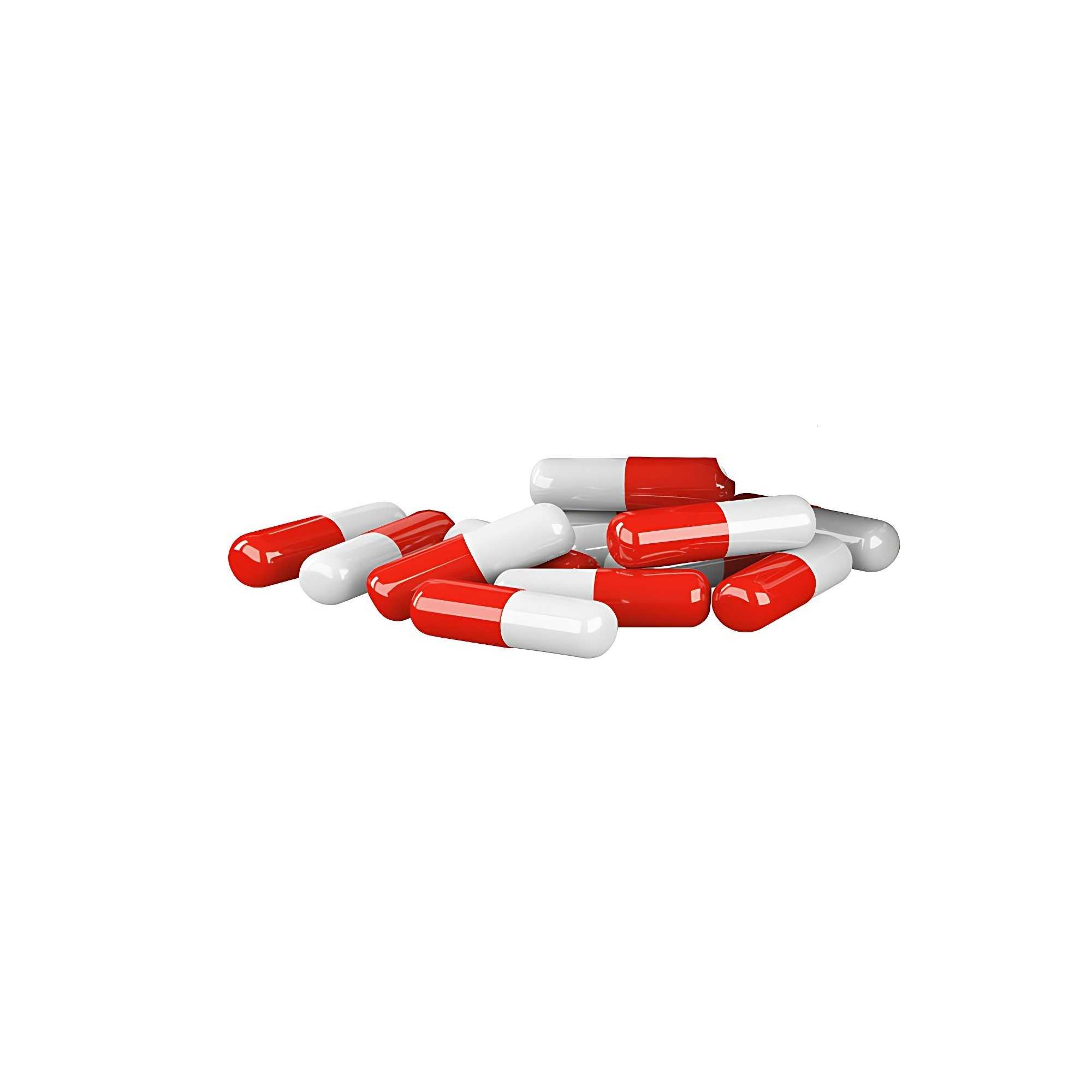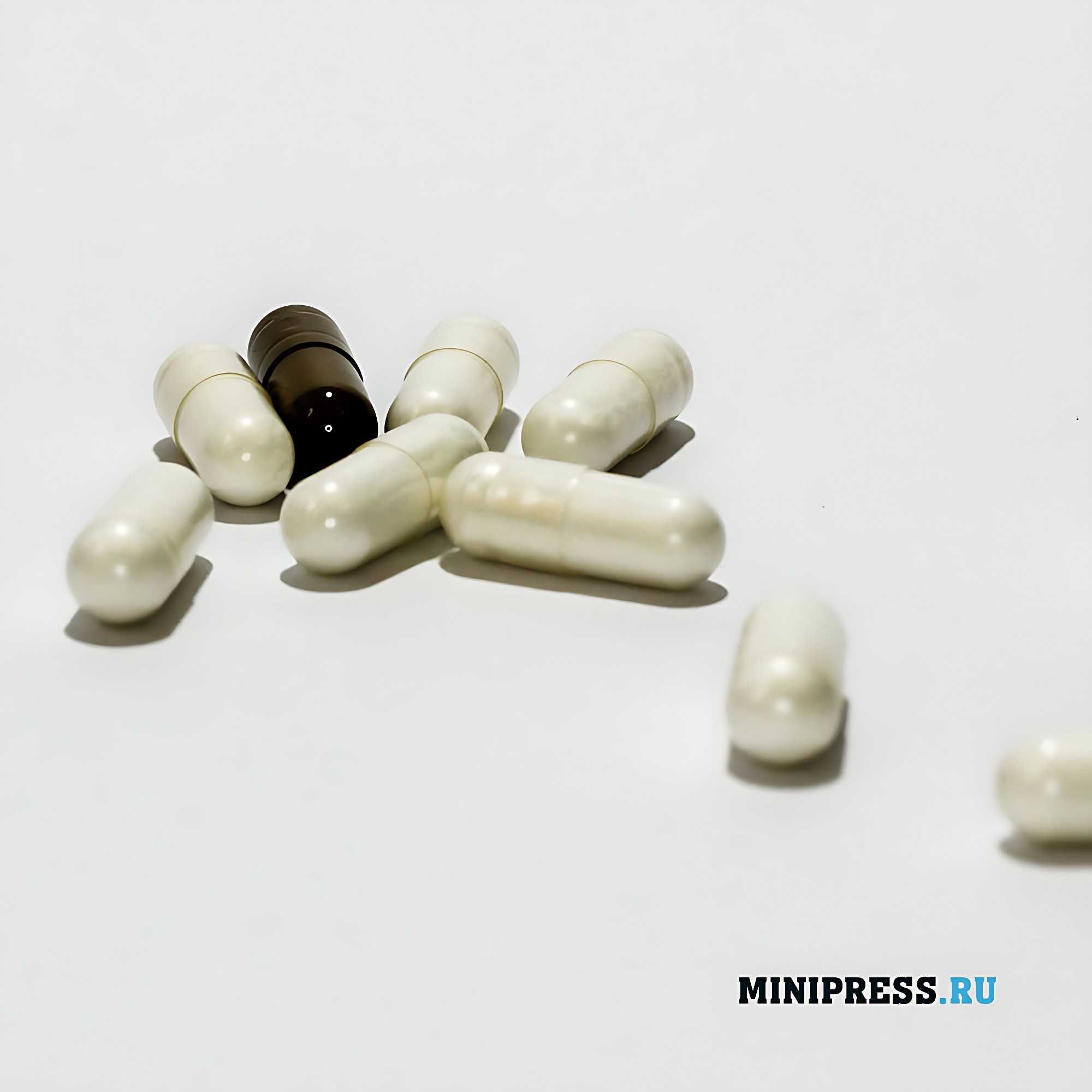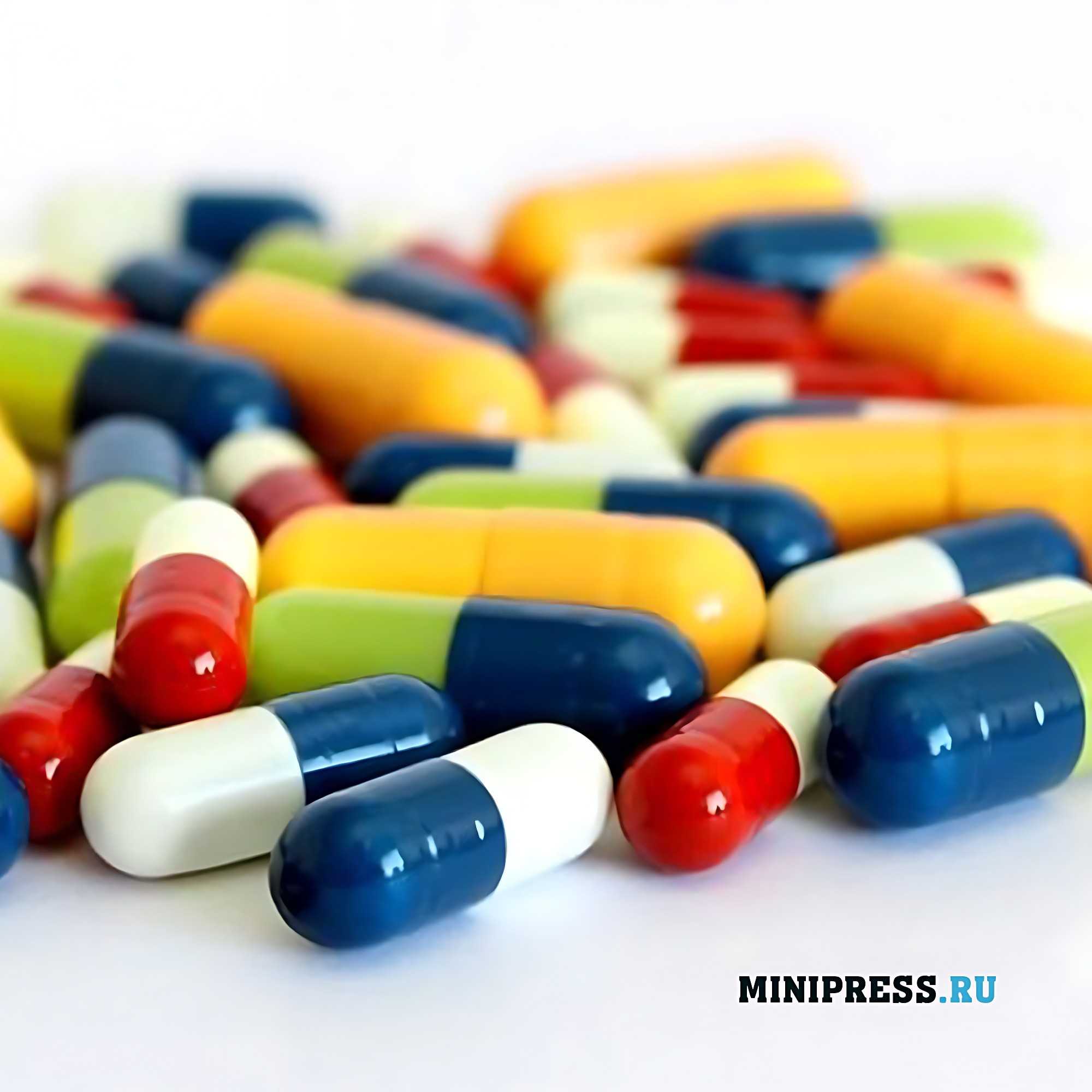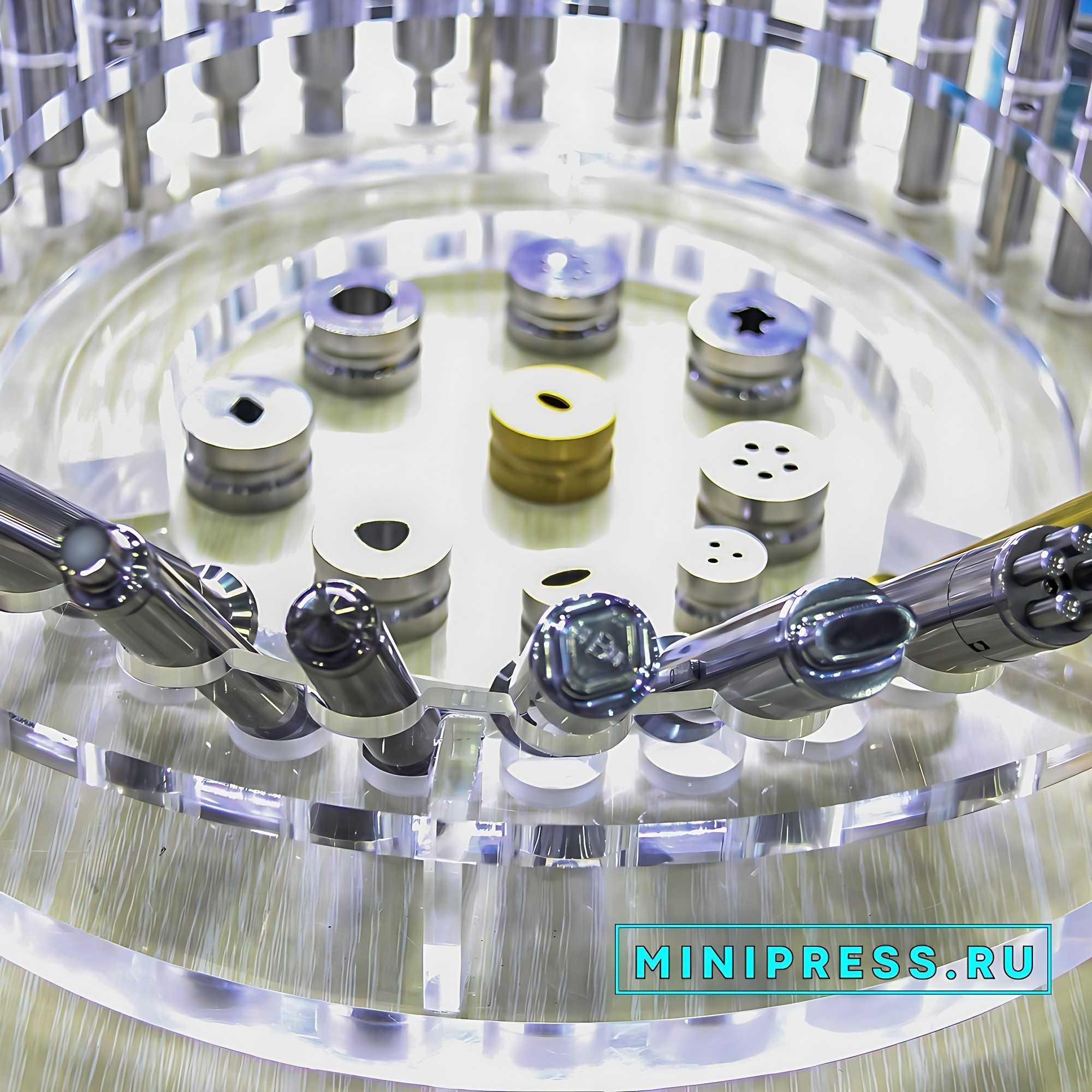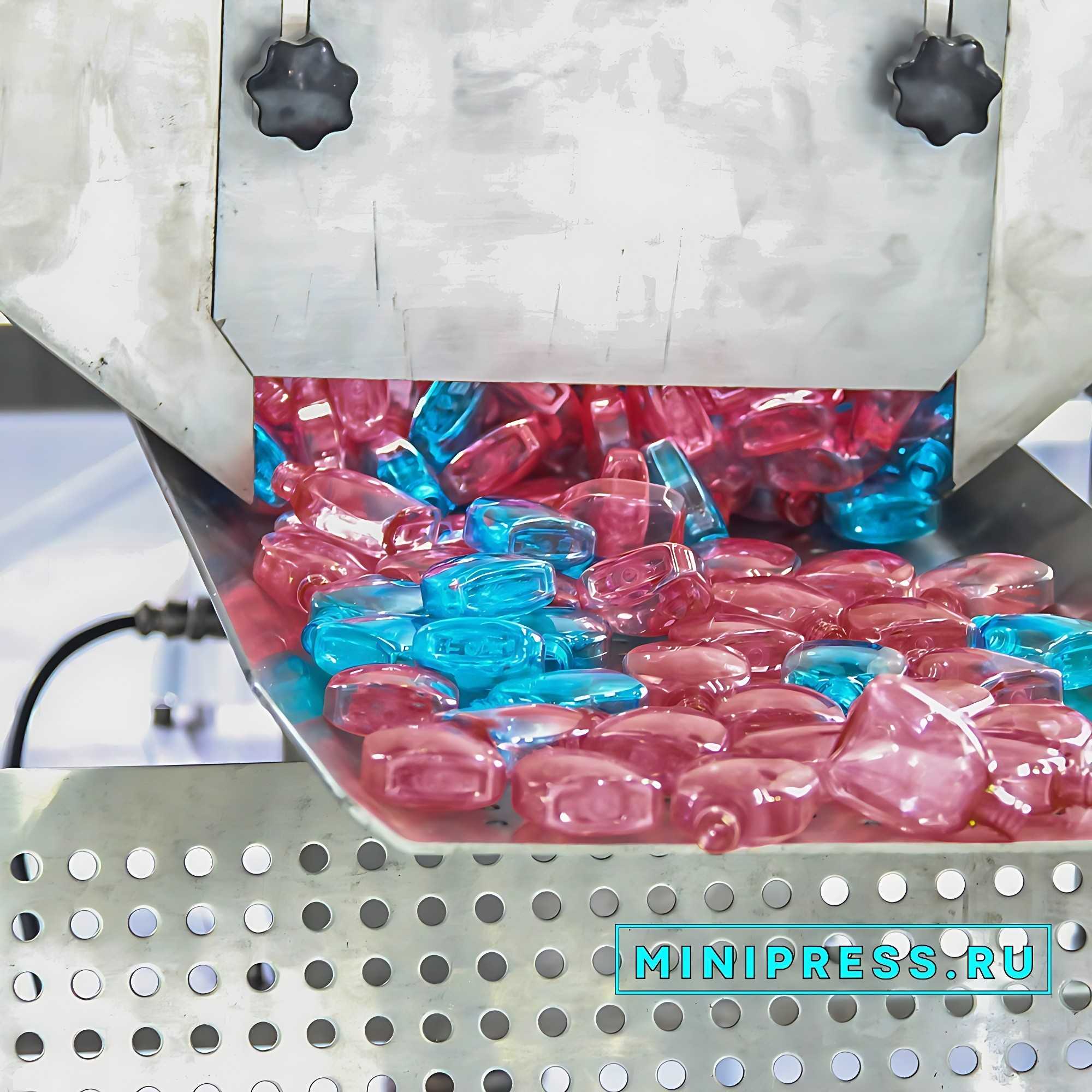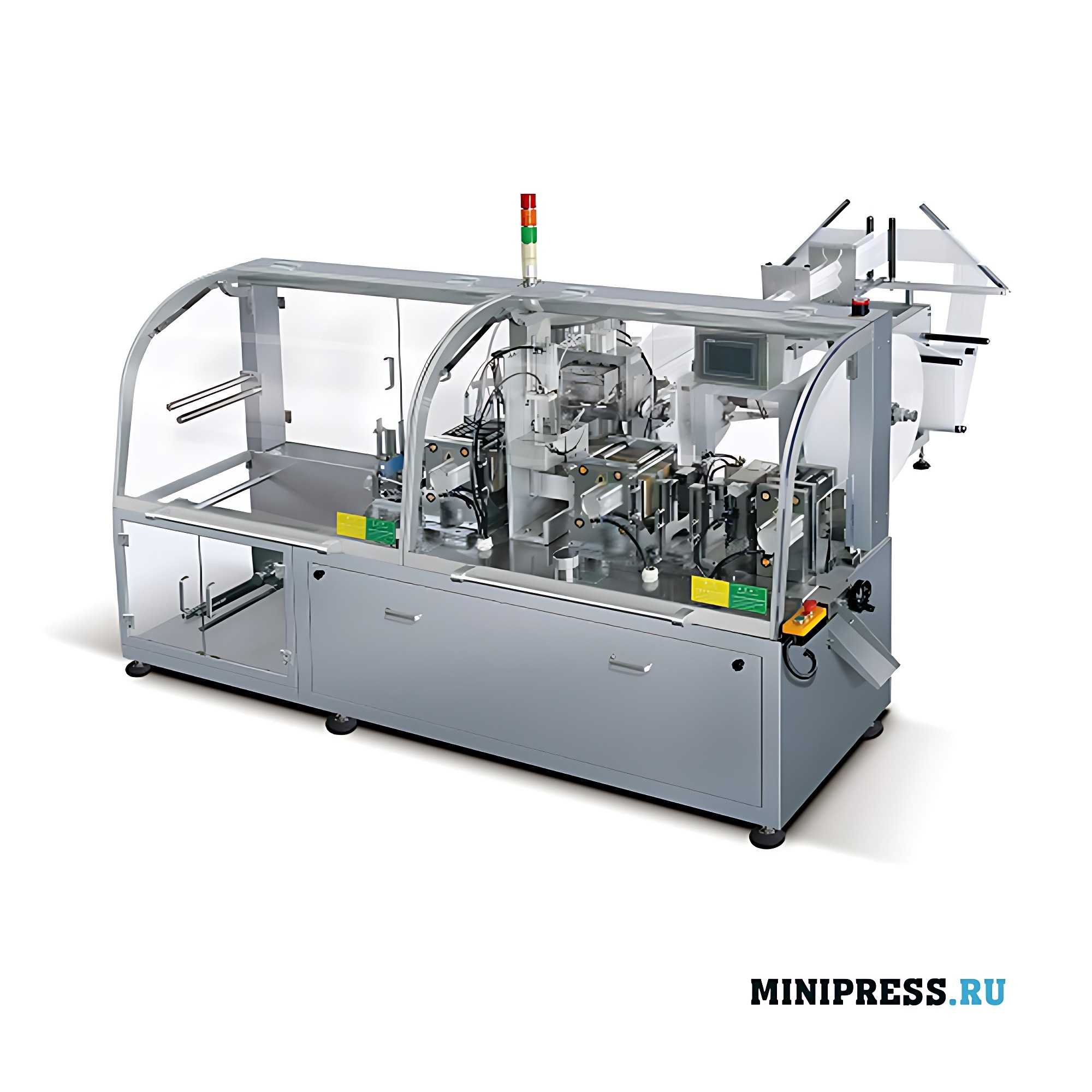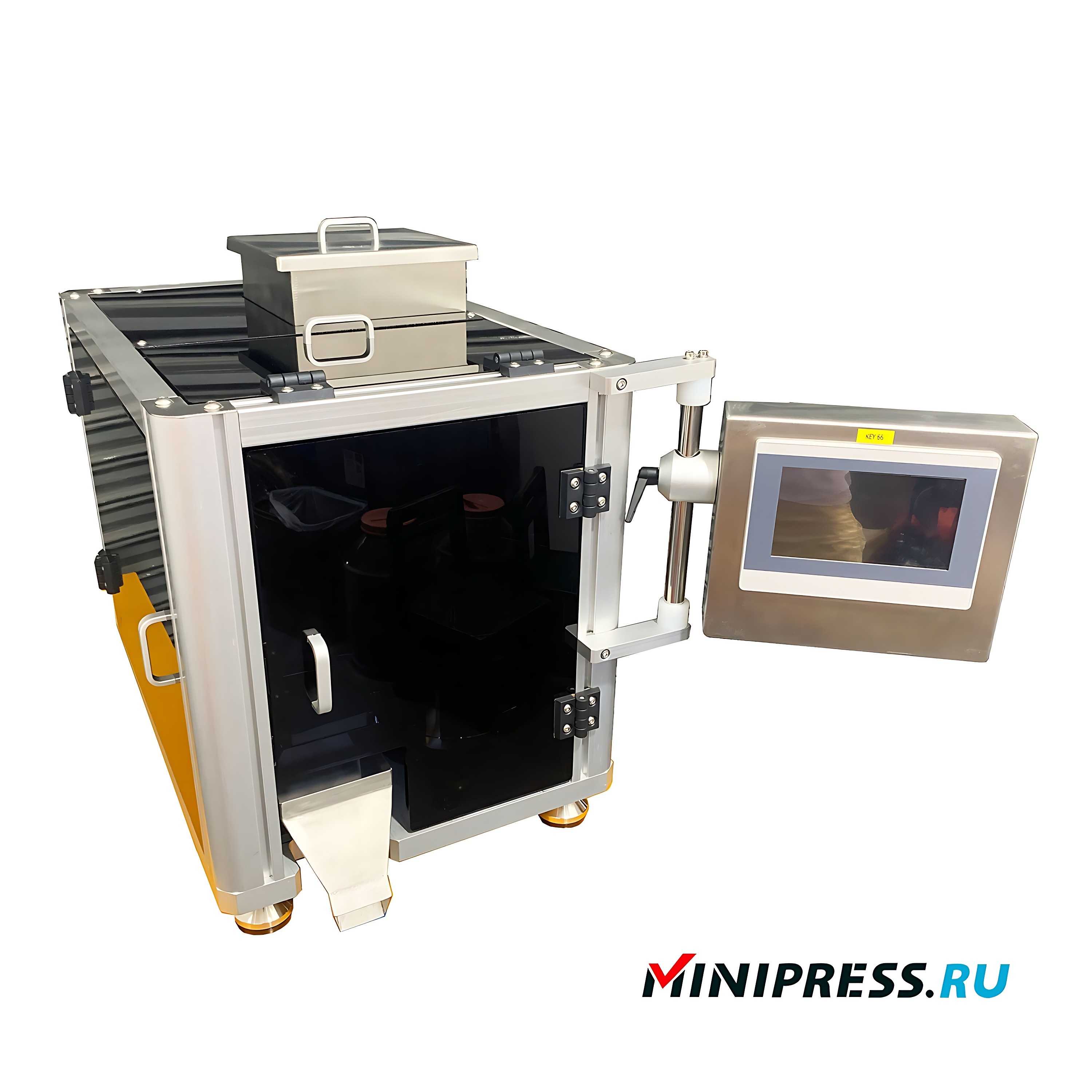 Video review of the model
Video review of the model
 Our service and customer service
Our service and customer service
One of the most important factors is the intended use of the product, which determines the conditions under which the encapsulated substance is used and its properties are manifested. This determines the choice of film-forming material and the resulting choice of microencapsulation medium. Slow release of the substance by diffusion requires the use of a film-forming material that swells rather than dissolves in the medium in which the microcapsules are used. On the other hand, rapid release can be achieved by selecting a film-forming material that is soluble, meltable or brittle. A further factor is the stability and solubility of the encapsulated substance under microencapsulation conditions. The instability of many substances even at a slight increase in temperature (enzymes, some vitamins, volatile liquids) limits the possibility of using methods involving heating. Methods based on the separation of liquid phases (methods of formation of a new phase from solutions) can be an alternative in this case. In this case, the properties of the substance will determine the choice of dispersion medium and dispersed phase. Of great importance is the cost of the process, so preference is given to methods involving a smaller number of stages and carried out in a continuous mode. The required size of the microcapsules, the content of the encapsulated substance and the efficiency of microencapsulation are also important factors. The above classification of microencapsulation methods, which is based on the nature of the processes occurring during microencapsulation, is rather conventional. In practice, a combination of different methods is often used. Below we will consider the most frequently used in the chemical-pharmaceutical industry methods of microencapsulation.
 Pharmaceutical Glossary
Pharmaceutical Glossary
 Technical specifications
Technical specifications
The main component of microcapsules – the substance to be encapsulated – can be in any aggregate state – liquid, solid, gaseous. The existing methods provide the possibility of microencapsulation of both lyophilic and lyophobic substances. The contents of microcapsules may include an inert filler, which is the medium in which the substance was dispersed in the process of microencapsulation, or is necessary for the subsequent functioning of the active substance. The content of the encapsulated substance in the microcapsules is typically 50-95% of the weight of the capsules. This value may vary depending on the technology and conditions of production, the required ratio of shell material and encapsulated substance, as well as on other process parameters: temperature, degree of dispersion, viscosity of the medium, presence of surfactants, etc. The term “microcapsules” or “nanocapsules” can refer to many different structures. One can use molecules within which the active ingredient is trapped, as well as complexes of complex molecules from which nanocapsules or nanospheres are formed. Nanoencapsulation is said to occur when the size of the molecules is less than a few micrometers. When the size of the molecules is less than one millimeter, we speak of microencapsulation. Different classes of substances can be used as shell material or encapsulating matrix: Waxes and lipids: beeswax, candelilla and carnuba waxes, wax emulsions, glycerol distearate, natural and modified fats. Proteins: gelatin, wheat proteins, soy proteins, zein, gluten, etc. Both proteins themselves and their modifications are used. Carbohydrates: starches, maltodextrins, chitosan, sucrose, glucose, ethyl cellulose, acetate cellulose, alginates, etc.
 Additional information
Additional information
Degradable polymers: polypropylene, polyvinyl acetate, polystyrene, polybutadiene, etc. The choice of material of shells or encapsulating matrix depends on the purpose, properties and method of release of the encapsulating agent, as well as on the chosen method of microencapsulation. The contents of microcapsules can be released by mechanical destruction of the shells under pressure, by friction, ultrasonic action, melting, by rupture from the inside by vapors or gaseous substances released under changing external conditions, by interaction of the shell substance with the medium when dissolved in it, as well as by diffusion of the contents when the capsule walls swell in the surrounding liquid. Existing methods of microencapsulation can be divided into three main groups: Physical methods of microencapsulation are based on methods of forming shells by mechanical techniques. This group of methods includes fluidized bed coating, extrusion using centrifuges or through tube-in-tube forming devices, vapor condensation (vacuum spraying). Chemical methods are based on chemical transformations leading to film-forming material, namely – formation of a new phase by cross-linking of polymers, poly condensation and polymerization. Both high molecular weight substances (oligomers or polymers) and low molecular weight substances can be subjected to chemical transformations. Physicochemical methods include coacervation, precipitation of film-forming polymer from aqueous medium by adding a component that reduces its solubility, formation of a new phase by temperature change, evaporation of a volatile solvent, solidification of melts in liquid media, extraction substitution, spray drying, and physical adsorption. When selecting a microencapsulation method, several major factors must be considered.
Order status tracking
Tell me the NJ-120 automatic capsule machine went ? 07/05/2024 17:46
Stella, good afternoon. Yes, already tomorrow until 17:30 you will receive it. Taking into account the heavy weight of the equipment, we ask you to take care of unloading by forklift in advance. The transportation company does not provide unloading. Only delivery to the address. 07/05/2024 17:47
Good afternoon, we have contracted you to deliver a GK-40 dry powder granulator to Monte Carlo, do you deliver to the terminal or to the actual address? 07/05/2024 17:56
Hello Emma, we ship all over Europe and the US including to Monte Carlo . The price in the catalog includes any delivery our customer asks for. 07/05/2024 17:58
I would like to discuss the purchase of model FK-05 - capping and screw cap machine. 07/05/2024 18:06
Good day. You can call on tel. +79853643808 or to the mail specified on the site. Natalie, this chat is only for tracking shipments. 07/05/2024 18:09
Roman, can you tell me if my rotary tablet press RZJ-35 has been shipped yet? Don't send it yet, I will send to your factory in China drawings of new punches, different design. 07/05/2024 18:16
Good afternoon, Nora! We're pausing the shipment. Send drawings to the office mail. The terms of production of new punches 20 working days. 07/05/2024 18:18
In Stavanger ITA-01 tablet and capsule counter, RZ-9 rotary tablet press and manual capsule filling machine. Help when we get it ? 07/05/2024 18:26
Good afternoon, Benjamin! We have received from the factories photos of the equipment after packing. Natalia will forward the photos to you. Delivery time to you is 45-50 days. 07/05/2024 18:28
Vacuum powder conveyor QV-01 quantity of 3 pieces, need discount and delivery to San Francisco. 07/05/2024 18:36
Good day Liam, in our catalog all prices are given including delivery to the door of the customer. If you buy 3 pieces we will make a discount of 7%. Delivery to San Francisco is included in the price. 07/05/2024 18:38
Roman hello, what about the automatic filling and sealing machine for sterile ampoules ABF-4D-1, invoice #101. 07/05/2024 18:46
Good afternoon, Elizabeth! We are making a request to the manufacturer. Tomorrow we will send photos and video of testing to your e-mail. 07/05/2024 18:47
Excuse me, I have important information, please do not deliver my shipment, automatic filling and sealing machine for glass ampoules ALG-10 to Skradin, but immediately upon arrival send it to Cinque Terre. 07/05/2024 18:56
Hello Savannah, we will try to resolve this issue for you. 07/05/2024 18:58
Contract #12, the deadline for delivery has already passed. Take action at last. Accelerate Tsibulsky R.G. 07/05/2024 19:06
Hello Mason, we are on vacation on weekends and are not able to respond to messages. Raise the contract, delivery time of equipment to your warehouse in Cinque Terre to 50 working ( not calendar) days. Action taken. 07/05/2024 19:07
Automatic blister packaging machine for PVC+cardboard LW-35 with delivery to Baltimore. We want to track the delivery status. 07/05/2024 19:16
Jackson, hello. The shipment has already arrived. Now it is in the warehouse of the transportation company. Your manager will contact you to clarify the time of delivery to your city. 07/05/2024 19:16
- EQUIPMENT FOR COATING TABLETS
- EQUIPMENT FOR FILLING AND SEALING GLASS AMPOULES
- EQUIPMENT FOR COUNTING AND PACKAGING TABLETS AND CAPSULES IN BOTTLES
- MACHINES FOR FORMING AND FILLING PLASTIC AMPOULES
- EQUIPMENT FOR PACKAGING TABLETS AND CAPSULES IN PLASTIC BOTTLES
- EQUIPMENT FOR THE PRODUCTION OF TABLETS
- HIGH-PRECISION DOSING MACHINES POWDER FILLING MACHINES
- AUTOMATIC EQUIPMENT FOR REMOVING TABLETS AND CAPSULES FROM BLISTERS
- EQUIPMENT FOR PRINTING LOGO ON TABLETS AND CAPSULES
- SPRAY DRYING EQUIPMENT FOR SUSPENSIONS
- MACHINES FOR THE PRODUCTION OF SUPPOSITORIES
- EQUIPMENT FOR WASHING AND STERILIZING BOTTLES
- EQUIPMENT FOR POLISHING AND DEDUSTING TABLETS AND CAPSULES
- EQUIPMENT FOR PACKING POWDERS INTO VIALS
- EQUIPMENT FOR FILLING HARD GELATIN CAPSULES WITH POWDER
- EQUIPMENT FOR FILLING CREAMS AND SEALING PLASTIC TUBES
- BOTTLE FILLING AND CAPPING EQUIPMENT
- EQUIPMENT FOR EFFICIENT MIXING OF POWDERS
- EQUIPMENT FOR SCREW FEEDING OF POWDERS
- POWDER GRANULATION EQUIPMENT
- AUTOMATIC PHARMACEUTICAL CENTRIFUGES
- EQUIPMENT FOR HOMOGENIZING CREAMS AND OINTMENTS
- EQUIPMENT FOR AUTOMATIC BOTTLE FEEDING FOR FILLING LINES
- EQUIPMENT FOR VACUUM TRANSPORTATION OF POWDERS
- EQUIPMENT FOR FILLING AND PACKAGING HERBAL TINCTURES
- EQUIPMENT FOR PACKAGING BULK MATERIALS IN PLASTIC BAGS
- EQUIPMENT FOR INDUCTION SEALING OF ALU FOIL BOTTLES
- EQUIPMENT FOR APPLYING THE EXPIRATION DATE AND BATCH NUMBER TO PRODUCTS
- EQUIPMENT FOR METAL DETECTOR IN GELATIN CAPSULES AND TABLETS
- EQUIPMENT FOR THE MANUFACTURE AND PACKAGING OF WET ALCOHOL WIPES
- EQUIPMENT FOR VACUUM PACKAGING IN PLASTIC BAGS
- EQUIPMENT FOR PACKING TEA INTO TEA BAGS WITH THREAD AND LABEL
- FLOW-PACK PACKAGING MACHINES
- EQUIPMENT FOR WEIGHT CONTROL AND SORTING OF CARDBOARD BOXES WITH MEDICINE
- EQUIPMENT FOR FILLING LIQUIDS IN PLASTIC AND METAL BARRELS
- EQUIPMENT FOR WRAPPING CARDBOARD BOXES WITH CELLOPHANE
- EQUIPMENT FOR PACKAGING FOOD PRODUCTS IN DOY-PACK PACKAGES
- EQUIPMENT FOR PACKAGING TABLETS IN STRIPS AND TUBES
- EQUIPMENT FOR PACKAGING PRODUCTS IN A FLOW PACK
- AUTOMATIC EQUIPMENT FOR SELF-ADHESIVE LABELS ON PACKAGING
- AUTOMATIC CARTONING MACHINES
- AUTOMATIC EQUIPMENT FOR BLISTER PACKAGING
- SEMI-AUTOMATIC EQUIPMENT FOR FILLING GELATIN CAPSULES
- MANUAL EQUIPMENT FOR FILLING GELATIN CAPSULES WITH POWDER
- EQUIPMENT FOR THE PRODUCTION OF FISHING BOILIES
- DESKTOP EQUIPMENT FOR MIXING POWDERS
- EQUIPMENT FOR MIXING LIQUIDS WITH MICROWAVE HEATING
- DESKTOP EQUIPMENT FOR LIQUID DOSING
- EQUIPMENT FOR VIBRATING SIEVING OF POWDERS
- EQUIPMENT FOR AUTOMATIC DOSING OF CREAMS AND OINTMENTS
- SEMI-AUTOMATIC EQUIPMENT FOR BLISTER PACKAGING
- EQUIPMENT FOR LABORATORY TESTING OF MEDICINES
- DESKTOP EQUIPMENT FOR HIGH-SPEED EMULSION PRODUCTION
- MACHINES PRINTING EXPIRATION DATE AND LOT NUMBER
- PERISTALTIC PUMPS DISPENSERS
- EQUIPMENT FOR POWDERING PHARMA RAW MATERIALS
- EQUIPMENT FOR FILLING HARD GELATIN CAPSULES WITH POWDER
- EQUIPMENT FOR POLISHING AND DEDUSTING TABLETS AND CAPSULES
- HIGH-PRECISION DOSING MACHINES POWDER FILLING MACHINES
- MACHINES FOR FORMING AND FILLING PLASTIC AMPOULES
- EQUIPMENT FOR FILLING CREAMS AND SEALING PLASTIC TUBES
- EQUIPMENT FOR PRINTING LOGO ON TABLETS AND CAPSULES
- EQUIPMENT FOR PACKAGING TABLETS AND CAPSULES IN PLASTIC BOTTLES
- EQUIPMENT FOR COUNTING AND PACKAGING TABLETS AND CAPSULES IN BOTTLES
- AUTOMATIC EQUIPMENT FOR REMOVING TABLETS AND CAPSULES FROM BLISTERS
- BOTTLE FILLING AND CAPPING EQUIPMENT
- SPRAY DRYING EQUIPMENT FOR SUSPENSIONS
- EQUIPMENT FOR THE PRODUCTION OF TABLETS
- EQUIPMENT FOR WASHING AND STERILIZING BOTTLES
- EQUIPMENT FOR FILLING AND SEALING GLASS AMPOULES
- EQUIPMENT FOR PACKING POWDERS INTO VIALS
- EQUIPMENT FOR COATING TABLETS
- MACHINES FOR THE PRODUCTION OF SUPPOSITORIES
- EQUIPMENT FOR HOMOGENIZING CREAMS AND OINTMENTS
- EQUIPMENT FOR EFFICIENT MIXING OF POWDERS
- EQUIPMENT FOR VACUUM TRANSPORTATION OF POWDERS
- POWDER GRANULATION EQUIPMENT
- AUTOMATIC PHARMACEUTICAL CENTRIFUGES
- EQUIPMENT FOR SCREW FEEDING OF POWDERS
- EQUIPMENT FOR AUTOMATIC BOTTLE FEEDING FOR FILLING LINES
- EQUIPMENT FOR APPLYING THE EXPIRATION DATE AND BATCH NUMBER TO PRODUCTS
- EQUIPMENT FOR PACKING TEA INTO TEA BAGS WITH THREAD AND LABEL
- EQUIPMENT FOR FILLING AND PACKAGING HERBAL TINCTURES
- FLOW-PACK PACKAGING MACHINES
- EQUIPMENT FOR WRAPPING CARDBOARD BOXES WITH CELLOPHANE
- EQUIPMENT FOR PACKAGING FOOD PRODUCTS IN DOY-PACK PACKAGES
- EQUIPMENT FOR PACKAGING TABLETS IN STRIPS AND TUBES
- EQUIPMENT FOR FILLING LIQUIDS IN PLASTIC AND METAL BARRELS
- AUTOMATIC EQUIPMENT FOR BLISTER PACKAGING
- EQUIPMENT FOR PACKAGING BULK MATERIALS IN PLASTIC BAGS
- EQUIPMENT FOR INDUCTION SEALING OF ALU FOIL BOTTLES
- EQUIPMENT FOR WEIGHT CONTROL AND SORTING OF CARDBOARD BOXES WITH MEDICINE
- AUTOMATIC CARTONING MACHINES
- EQUIPMENT FOR THE MANUFACTURE AND PACKAGING OF WET ALCOHOL WIPES
- AUTOMATIC EQUIPMENT FOR SELF-ADHESIVE LABELS ON PACKAGING
- EQUIPMENT FOR METAL DETECTOR IN GELATIN CAPSULES AND TABLETS
- EQUIPMENT FOR PACKAGING PRODUCTS IN A FLOW PACK
- EQUIPMENT FOR VACUUM PACKAGING IN PLASTIC BAGS
- SEMI-AUTOMATIC EQUIPMENT FOR FILLING GELATIN CAPSULES
- EQUIPMENT FOR VIBRATING SIEVING OF POWDERS
- EQUIPMENT FOR LABORATORY TESTING OF MEDICINES
- EQUIPMENT FOR POWDERING PHARMA RAW MATERIALS
- DESKTOP EQUIPMENT FOR LIQUID DOSING
- EQUIPMENT FOR THE PRODUCTION OF FISHING BOILIES
- SEMI-AUTOMATIC EQUIPMENT FOR BLISTER PACKAGING
- DESKTOP EQUIPMENT FOR MIXING POWDERS
- DESKTOP EQUIPMENT FOR HIGH-SPEED EMULSION PRODUCTION
- EQUIPMENT FOR MIXING LIQUIDS WITH MICROWAVE HEATING
- EQUIPMENT FOR AUTOMATIC DOSING OF CREAMS AND OINTMENTS
- PERISTALTIC PUMPS DISPENSERS
- MACHINES PRINTING EXPIRATION DATE AND LOT NUMBER
- MANUAL EQUIPMENT FOR FILLING GELATIN CAPSULES WITH POWDER
 7736
7736 5923522
5923522